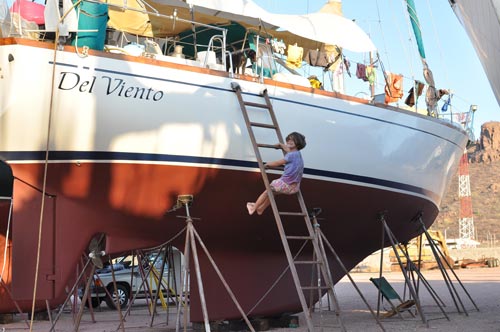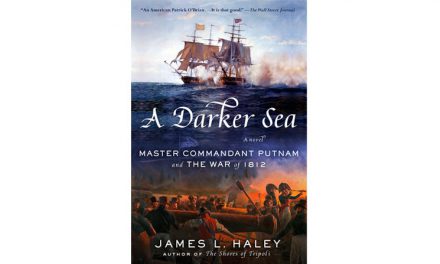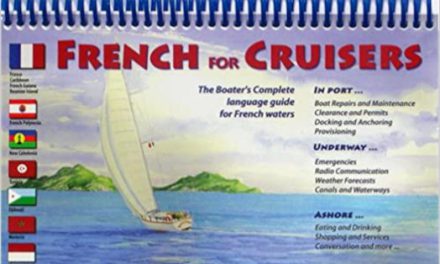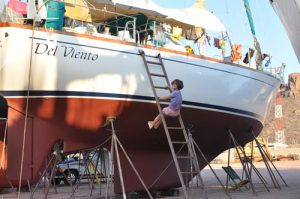 SHOW US SOME KEEL
SHOW US SOME KEEL
Will your boat be included in a spread in our May 2018 issue? Send michael_r@goodoldboat.com a high-res photo of her bottom, your boat’s bottom. Let’s see her hanging in Travelift slings, or on the hard, or even a good shot of her under sail, heeled way over and taken from an off-the-boat vantage point on the windward side — be creative!
ACROSS THE BAR: MEADE GOUGEON
Good Old Boat Research Editor Dan Spurr writes of his friend, Meade Gougeon, who passed away August 27, 2017 at age 78.
“His last name has been misspelled and mispronounced in more ways than the Gougeon (Goo-shawn) family can imagine, but every boat owner knows how to spell and say WEST System, the brand of epoxy and accessories that Meade, along with brothers Joel and Jan, began marketing in 1970.

Dan Spurr was aboard to capture Meade (left) and brother Jan Gougeon sailing Adagio, a 35-foot trimaran that was the first boat built (1970) with WEST System epoxies. Over the years, Adagio was totally tricked out, as evident in this 2009 photo. Weighing around 2,000 pounds, it won many races on the Great Lakes. Meade and Jan were inducted into the National Sailing Hall of Fame in 2015.
“WEST stands for Wood Epoxy Saturation Technique, a cold-molding process in which diagonal layers of wood veneer are stapled over frames and locked into a stiff monocoque structure with epoxy resin, which functions as both a glue and coating to seal in the desired amount of moisture and to keep out water. While WEST epoxies (including custom professional-grade Pro-Set brand) are used to build boats in wood and composites, boat owners and home do-it-yourselfers around the world have been empowered by the easy-to-use kits to fix everything from boat parts to toilet tanks. In the 1970s the Gougeons built wind turbine blades for NASA, at the forefront of what today is an established industry.
“Much more interested in sailing than business, Meade was a champion DN iceboater, even at age 58, a sport he embraced growing up and living on Michigan’s Saginaw Bay. He and his brothers started in business building DN iceboats — 200 between 1969 and 1974. From here the brothers sold the iceboat-building company to focus on building larger boats, for the water: the trimaran Victor T, which won the C-class Nationals in 1969; the Ron Holland-designed Golden Dazy which won the 1975 Canada’s Cup; the 60-foot (18.3m) proa/sloop Slingshot intended to break the world sailing speed record (it didn’t); the 60-foot Rogue Wave catamaran newspaperman Phil Weld commissioned to compete in the OSTAR race from Plymouth, England to the Newport, Rhode Island; and the Gary Mull-designed Hot Flash Half Tonner. All were cold-molded in wood and the epoxy resin they developed in cooperation with nearby Dow Chemical Co.
“Eventually the epoxy business became so profitable that the brothers stopped building boats…well, almost. Meade managed the company, (Gougeon Brothers, Inc.), Joel went into state politics, and Jan ran the shop, which was a sort of R&D endeavor, and did result in a number of interesting boat projects. Of note was the G-32 self-righting catamaran, the design of which was prompted by Jan capsizing another multihull while sailing to the U.K. to qualify for the OSTAR. After several days upside down, upon rescue he vowed to invent a self-rescuing multihull—and did. They were built in fiberglass and a handful sold, before Jan moved on to test other ideas. New employees to Gougeon Brothers Inc. were strongly encouraged to build their own boat in the shop, as did current CEO Alan Gurski, who built a Gougeon 12.3 when he was hired in 2007.
“Meade loved small boats with sails, and liked to explore remote waters like Lake Huron’s Whalesback Channel in a sailing canoe. In more recent years, largely retired, he and his wife spent winters in Cedar Key, Florida, where he built a number of unusual boats, such as the Gougmaran for exploring extreme shoal waters, and the sailing canoe in which he won his class in the grueling 300-mile Everglades Challenge from Tampa to Key Largo. The year: 2017. His age: 78. Remarkable! As was just about every other aspect of this man who will long be revered and respected for his intellect, generosity, mentoring, and friendship.”
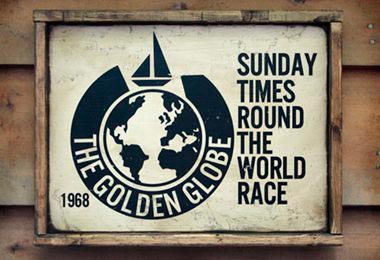 2018 GOLDEN GLOBE — WOW!
2018 GOLDEN GLOBE — WOW!
I was born in 1968, so it caught me a bit off guard when I learned that the 2018 Golden Globe Race will commemorate the 50th anniversary of the 1968 race that is still being talked about today. But the reminder that I’m on the eve of the half-century mark hasn’t diminished my enthusiasm.
In case you’ve been living under a rock, or were born recently, or new to the sailing world, the 1968 race spawned legends and legendary stories. The race was more than a race, it was a challenge. Nobody at the time had ever sailed solo, non-stop, unassisted around the world. Anybody who finished the race would be the first to do so. Was it even possible?
The world, Great Britain in particular, was buzzing about Sir Francis Chichester, knighted the year prior before cheering thousands for becoming the first to sail solo around the world via the clipper route. But a race in which solo sailors did it non-stop, without help, wow. Throw in constant media coverage of the race underway and a purse…everyone’s interest was piqued.
Now a legend in the sailing world, Bernard Moitessier famously turned away from the fame and fortune lying at the finish line and continued around, “To save my soul.” Robin Knox Johnston finished first and was himself knighted (in fact, he was the only finisher). Donald Crowhurst never left the Atlantic Ocean, yet faked position reports and drove himself to madness at the prospect of being discovered. He eventually stepped off the transom, his body never recovered, a wife and children left behind. Nigel Tetley lost his boat after circumnavigating, but before finishing, all because he was pushing her too hard in a bid to beat the phantom threat of Crowhurst’s progress. All of the remaining racers threw in the towel at some point along the route.
Now, in a world where long-distance ocean racing has become the exclusive domain of yachts emblazoned with corporate logos and piloted by professional skippers, along comes the 2018 Golden Globe Race. Only 30 racers can enter and all are restricted to sailing boats designed prior to 1988. No vessel can carry aboard any of the following: GPS, radar, chart plotters and electronic charts, electronic wind instruments, electronic log, mobile phone, iPhone, iPod, Kindle or any computer-based device, CD players, electronic watches/clocks, digital video or still cameras, electronics of any kind, satellite equipment of any kind, digital binoculars, pocket calculators, water-maker, carbon fiber, Spectra, or any high-tech materials. In short, with the exception of designated safety gear (such as satellite phone and tracking systems and modern AGM batteries), if it wasn’t aboard Robin Know Johnston’s boat at the start of the 1968 race, it cannot be aboard a boat at the start of the 2018 race.
These are good old boats! And anyone who can pony up the entry fee and has access to a qualifying boat, can race. I can’t wait to follow along.
Learn more at: http://goldengloberace.com/.
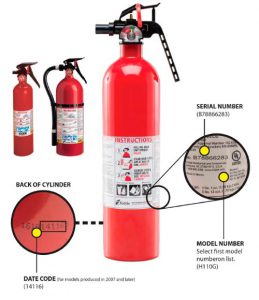 RECALL
RECALL
Kidde, the fire extinguisher manufacturer, is recalling 134 models of Kidde fire extinguishers with plastic handles manufactured between January 1, 1973 and August 15, 2017, including some models that were previously recalled in March 2009 and in February 2015. The extinguishers were sold in red, white, and silver, and are either ABC- or BC-rated.
This is a lot of fire extinguishers, but check yours carefully before assuming it’s recalled. We’ve got 3 Kidde plastic-handled fire extinguishers aboard our boat and none are subject to the recall. At any rate, this was a good excuse to check that we’ve got the required number/type of extinguishers aboard and that they are all charged.
For recall details: www.kidde.com.

